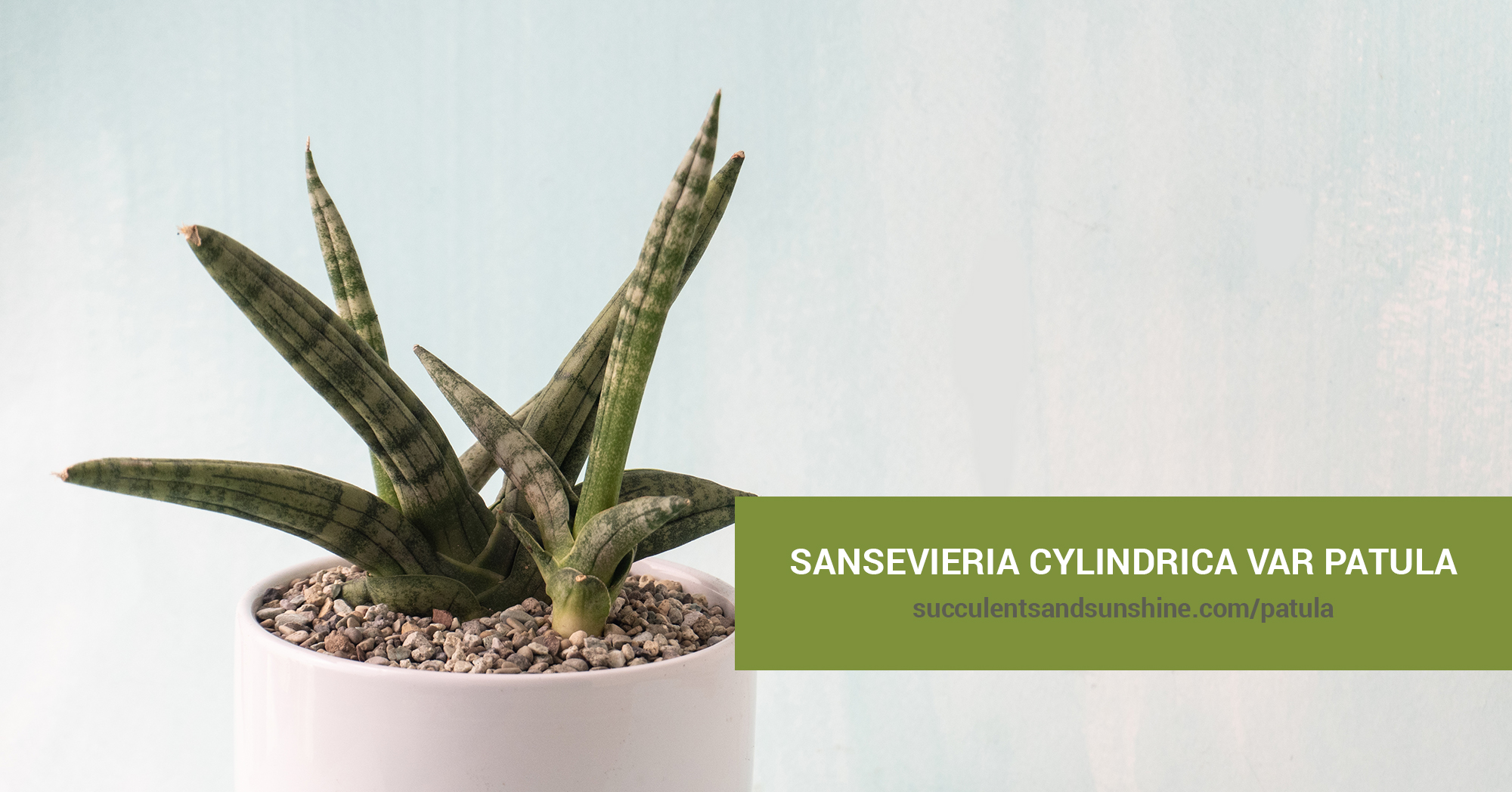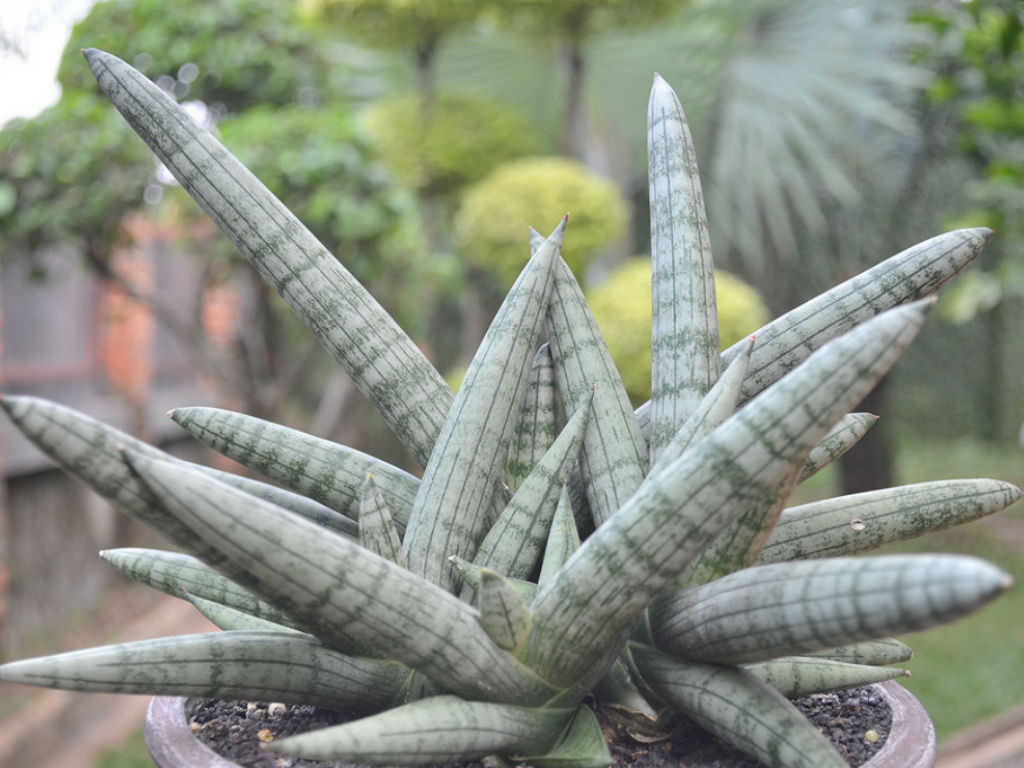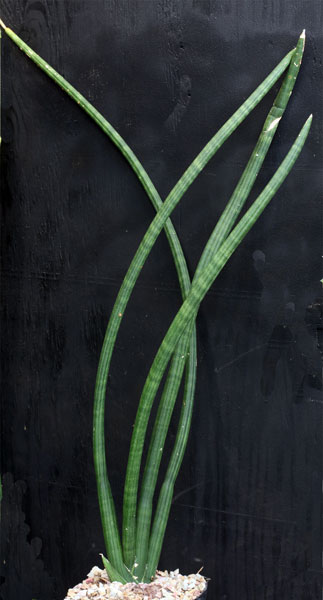This vibrant lime green succulent has chubby, striped cylindrical leaves that curl outward and downward instead of upward like most other succulents. On rare occasions, it produces white flowers.
Table of Contents
Care and Propagation Information
Sansevieria cylindrica var. patula is a great choice for an indoor plant, as it is able to flourish in dimly lit conditions.
Watering
For Sansevieria cylindrica var. patula, it is best to use the “soak and dry” method of watering, giving the soil adequate time to dry out between waterings. During the winter season when the plant is dormant, water should be used sparingly.
Where to Plant
Sansevieria cylindrica var. patula is not suitable for areas with temperatures lower than 30°F (-1.1° C), so it’s recommended that you keep it in a pot that can be moved indoors when necessary. This succulent can thrive in either partial sun or in lower levels of indoor light.
How to Propagate Sansevieria cylindrica var. patula
Sansevieria cylindrica var. patula can be reproduced by dividing its offsets.
Offsets
To propagate Sansevieria cylindrica var. patula from offsets, begin by cutting the offset away from the main plant using a clean, sharp knife or scissors. Let the cut end of the offset heal for a few days before planting it in a pot filled with well-draining soil. Make sure to water the soil only when it has completely dried out.
Care and Propagation Information
General Care for Sansevieria cylindrica var. patula
Watering
For Sansevieria cylindrica var. patula, it is best to use the “soak and dry” method of watering, giving the soil adequate time to dry out between waterings. During the winter season when the plant is dormant, water should be used sparingly.
Where to Plant
Sansevieria cylindrica var. patula is not suitable for areas with temperatures lower than 30°F (-1.1° C), so it’s recommended that you keep it in a pot that can be moved indoors when necessary. This succulent can thrive in either partial sun or in lower levels of indoor light.
How to Propagate Sansevieria cylindrica var. patula
Sansevieria cylindrica var. patula can be reproduced by dividing its offsets.
Offsets
To propagate Sansevieria cylindrica var. patula from offsets, begin by cutting the offset away from the main plant using a clean, sharp knife or scissors. Let the cut end of the offset heal for a few days before planting it in a pot filled with well-draining soil. Make sure to water the soil only when it has completely dried out.
FAQ
How fast do cylinder snake plants grow?
Cylindrical snake plants are not particularly fast-growing, generally reaching an approximate height of 30 inches (70 cm). They will benefit from warmer conditions and more light, and their growth can be expected to be most active between spring and fall.
Is Sansevieria cylindrica rare?
This species of Sansevieria is a rare and hard-to-find houseplant, making it a great choice for those looking for a unique addition to their collection.
How do you care for a Sansevieria cylindrica?
The plant is quite drought tolerant and doesn’t require a lot of watering. It should be watered only once a week during the summer, making sure that the soil is well-draining and never stays too wet, as this can cause root rot.
How big does cylindrical snake plant get?
Do cylindrical snake plants like to be root bound?
Generally speaking, it is best to leave Snake Plants in the same pot they’re in and only repot them if they become root bound. Repotting into a larger pot can put added stress on the plant, so it is not generally necessary to do so.



